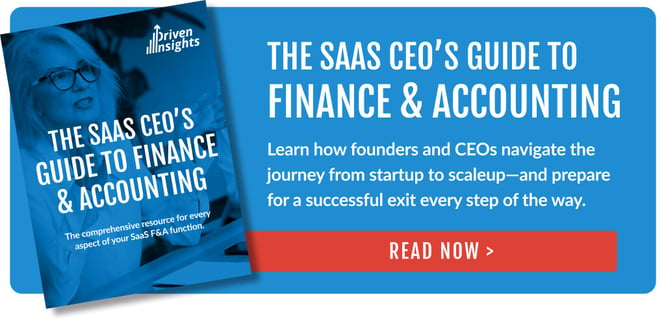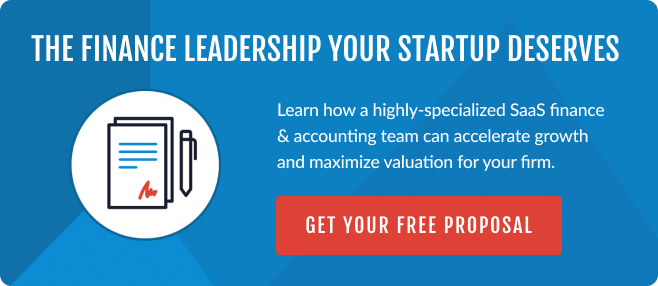
Two of the primary forms of SaaS capital—debt and equity financing—are often defined by their drawbacks. Debt financing, as the name implies, requires taking on a loan and repaying principal with interest. Equity financing avoids the need for current payment, but requires SaaS founders to give up a portion of the ownership of their company.
Both options can provide much-needed capital to accelerate growth, but if you’re a SaaS founder or CEO, it can seem like a choice between the lesser of two evils.
However, with the strategic use of debt, equity, or a mix of both, the pros will far outweigh the cons. The key is to look beyond the generic differences between debt and equity, and learn how each form of SaaS capital applies to your business.
In this article, we’ll explain how factors like ownership stakes, rates of return, availability of capital, and the growth stage of your business all play a role in making the right call.
Debt vs. Equity: Comparing Your Options for SaaS Capital
Let’s start by comparing equity vs. debt relative to common questions that arise with any SaaS capital raise. When it comes to identifying the right option, even seemingly subtle differences in ownership, investor returns, repayment, voting rights, and other key details matter—a lot.
Which Results in More Capital: Equity or Debt?
Equity investments will typically have a higher ceiling on funding amounts, especially for a SaaS business that represents a major market opportunity.
Debt amounts are typically lower as they are often tied to specific ratios, calculations, or SaaS metrics like a multiple of Annual Recurring Revenue (ARR), Monthly Recurring Revenue (MRR) or EBITDA.
How Much Return on Investment do These Capital Sources Expect?
Equity investors will have much higher expectations for a substantial return, and are looking for a 20% to 30% (or more) Internal Rate of Return (IRR).
Expected rates of return for debt lenders vary widely, from as low as 5% to 25% or more, based on interest rates and other fees, loan terms, and other factors.
Is Ownership Diluted with a SaaS Capital Raise?
Raising equity will dilute the ownership of existing investors, reducing their stake in the SaaS business.
Taking on senior debt does not typically dilute ownership. However, some lenders will introduce warrants as a vehicle to attain an ownership stake and enhance their returns.
How Soon Will Capital be Available?
Equity capital will be deposited directly into a bank account on successful completion of the fundraising process. The process often takes upwards of three to four months.
With debt capital, term loan amounts will be deposited directly into a bank account on successful completion of the fundraising process. Lines of credit, however, will provide access to money as needed, subject to loan guidelines. The process often takes upwards of two months.
Which Has a Higher Cost of Capital: Equity or Debt?
Equity generally has a higher cost of capital than debt, which translates to more expensive capital for your firm, in some cases a lot more.
Senior debt is typically much less expensive than equity, but some of the more expensive options for debt are comparable in cost to the lower end of equity.
How Does Repayment Work with Equity vs. Debt Financing?
Other than dividends, equity financing won’t typically require a return or repayment made on invested funds until exit or a liquidity event like a recapitalization.
Plan to make regular loan payments with debt financing, which are typically a blend of principal and interest. Some debt repayment can have periods of no payments or interest-only payments with a balloon (or bullet) payment down the line, but most require some level of current repayment.
Are SaaS Business Owners Personally Liable?
SaaS business owners typically have no personal liability with equity capital if investment goals aren’t met.
With debt, some lenders will require a personal guarantee. SaaS business owners may be personally liable for repayment if the business is unable to meet its debt obligations.
Administration of SaaS Debt vs. Equity
An equity raise will require detailed financial reporting and may also require an annual audit. Equity financial reporting requirements are likely to be more comprehensive than those required by lenders.
Almost all lenders will require ongoing financial reporting and covenant calculations and compliance, while some may also require a financial review or an annual audit and borrowing base calculations.
SaaS Board Voting Rights and Control
Equity investors typically require a seat on the board and may require a majority stake, giving them voting control.
Lenders do not typically require board seats or voting rights.
Now that we’ve covered some of the most common questions around SaaS capital, let’s take a closer look at different options for raising debt vs. equity.
Options for SaaS Fundraising: Debt
Many business owners aren’t aware of the many and varied debt options available to a solid, growing SaaS business. Often, there are options that can minimize or completely remove the need for an equity raise for a SaaS company.
Types of lenders to consider include:
- Banks and other senior lenders providing term loans and lines of credit.
- Small Business Administration (SBA) lenders.
- Venture debt, often based on your Monthly Recurring Revenue, many prefer to follow or co-invest alongside a large equity investment from a blue chip VC.
- Government, foundation, and other grants.
- Revenue-based lending lines.
- Mezzanine (or subordinated) lenders with a higher risk tolerance (can include warrants).
- Invoice factoring and Accounts Receivable financing.
- Credit cards and similar lending products.
Common lending criteria for SaaS capital raises with debt:
- Low customer churn together with growing net new Annual Recurring Revenue (ARR).
- Ideally, a positive EBITDA, although higher risk lenders may lend with a negative cash flow provided there is sufficient liquidity.
- A large, addressable market with a strong value proposition.
- For an accounts receivable based line of credit, traditional lenders will typically lend 70% to 80% against domestic receivables <30 days.
- Most venture debt providers prefer an ARR of more than $5 million, and a recent equity raise with a well-known VC or PE partner; expect minimum loans of $2-5 million.
Options for SaaS Fundraising: Equity Financing
Many SaaS management teams believe there’s a certain prestige in raising money from venture capital or private equity firms. With an eye toward minimizing dilution and retaining control, we encourage you to think about whether you can accomplish your business goals without an equity raise, delaying the raise, or simply raising less.
While there are plenty of situations that warrant a classic equity raise, don’t assume that’s right for you before considering other options.
Sources of SaaS capital with equity can include:
- SaaS accelerators
- Angel investors
- Quasi-state technology funds which could be considered under the VC category
- Venture Capital and related funds
- Private Equity
- High net worth individuals
- Crowdsourcing
- Corporate and strategic investment
Common investment criteria for SaaS capital raises with equity:
Investment criteria varies widely between VC and PE firms. You can find a breakdown of key factors in our article “Private Equity vs. Venture Capital: Funding Your SaaS Company.”
Raising Capital with Both Debt and Equity
Despite all of their differences, a combination of debt and equity is quite common for SaaS businesses. Here are a few typical scenarios.
In many cases, if you’re raising equity, venture capital (VC) and private equity (PE) investors may also require you to take on some level of debt as part of the term sheet. In fact, PE firms almost always use debt alongside equity to reduce dilution and provide a balanced funding approach.
You’re not likely to see venture capital debt in a seed round, but it’s fairly common during series A, B, and C rounds, and very common in growth equity rounds.
Revenue-based lenders—that receive a percentage of your revenues in exchange for the money they invested—often invest during SaaS seed rounds and as bridges between equity rounds.
How to Find the Right Mix of Debt and Equity for Your SaaS Capital Raise
Driven Insights specializes in helping SaaS businesses define and meet their funding needs at various stages of growth. From forecasting capital requirements to choosing funding sources, identifying/presenting the right metrics, competently reporting GAAP financials, conducting due diligence and closing the deal, Driven Insights provide enormous value to SaaS businesses.
Our outsourced SaaS CFO services are a fully-integrated accounting and finance solution designed to accelerate SaaS growth with insights and expertise to lead and/or support your debt and equity capital raise requirements.
If deep support for your SaaS capital raise sounds like the right fit for your business, take the first step today. Schedule your introduction to Driven Insights and get a free, custom proposal.








